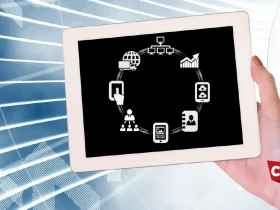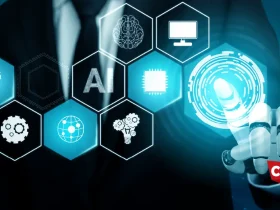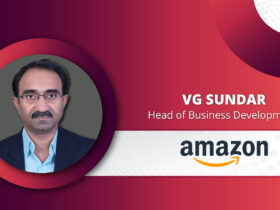“One unassailable truth is that automation is here to stay. Technology tools and automation of work in the last few decades have not only helped to improve the quality of work but increased efficiencies,” says Tim Hood, Vice President – EMEA & APAC at Hyland, in an exclusive interview with EnterpriseTalk.
ET Bureau: What options are there for businesses looking for both short- and long-term solutions to their tech workforce shortages?
Tim Hood: The rapid rise in job vacancies, rising inflation, and continuing supply chain challenges have forced businesses to reassess how they can build greater organizational resilience. Many have opted to make significant investments in new technology, while others have identified ways to leverage the performance of technologies already in place, often a more practical and affordable solution.
Organizations often have islands of legacy tech, performing discrete tasks in specific departments in isolation from other functions. While each of these systems is powerful in its own right, if you were to build bridges between them and harness their collective power, you would create a business-wide technology infrastructure that would be much greater than the sum of its parts.
By removing, for example, repetitive and mundane tasks with the help of automation, the process often becomes a catalyst for greater job satisfaction, enabling your teams to concentrate on ‘human touch’ tasks and enjoy opportunities to be more creative and collaborative.
ET Bureau: Some businesses are turning to hyperautomation as a possible silver bullet in the face of a difficult hiring environment and rising wage costs. Is automation really, truly going to address the employee gap?
Tim Hood: There’s no silver bullet to the current challenges, but one unexpected consequence of the pandemic is that it has significantly accelerated digital transformation. Businesses have seized the opportunity to automate a wide range of processes, with many embracing hyperautomation.
According to Gartner, a leading research firm, hyperautomation is “a business-driven, disciplined approach to rapidly identify, vet and automate as many business and IT processes as possible, involving the orchestrated use of multiple technologies, tools or platforms.”
Fundamentally, it’s a combination of tools and technologies, which, when applied together, allows the entire end-to-end workflow to be automated.
By implementing a strategy where hyperautomation, for example, deals with the time-consuming task of processing unstructured data found on written forms, employees would be able to find information faster, the benefits of which would be significant.
ET Bureau: Do you believe that firms can create more resilient workplaces by incorporating hyperautomation tools, AI, and machine learning into existing processes?
Tim Hood: Yes, absolutely. One unassailable truth is that automation is here to stay. Technology tools and automation of work in the last few decades have not only helped to improve the quality of work but increased efficiencies. Artificial intelligence (AI) and Machine Learning (ML) programmed robots can perform repetitive tasks consistently, efficiently, and more accurately than humans. AI-powered tools have uncovered actionable insights from data, allowing companies to become better at what they do.
Also Read: Harnessing Automation to Mitigate the Impact of COVID-19
ET Bureau: In what ways is hyperautomation bringing together tools to enable employees to focus on higher-value and strategic tasks?
Tim Hood: Hyperautomation is a way to create a greater return from your existing assets by bringing together what are normally disparate systems to create a ‘multiplier effect.’ From a practical perspective, it’s an approach that helps create greater efficiency, accuracy, and productivity.
Robotic process automation (RPA), AI, and ML are the core enabling technologies of hyperautomation which, when supported by event-driven software architecture, business process management, and a content services strategy, can help create efficient organizations of the future, optimize systems through the power of real-time data assimilation, analysis, and simulations, and engineer better employee experiences.
Not only would that lead to greater customer satisfaction but also relieve employees of many monotonous and unfulfilling activities in the workplace. That is better for the business and more satisfying for staff, who can focus instead on higher value, strategic tasks.
However, while automation can provide optimal outcomes, effective implementation requires a thorough understanding of how individual tools interact with each other. To maximize the return on the automation strategy, it is important to understand the current workflows in your organization, so you know what’s working well and what could be improved.
ET Bureau: What should business leaders be doing to help existing tech professionals upskill, reskill, and expand their responsibilities? What opportunities for training and development should be highlighted?
Tim Hood: As the nature of work evolves, people’s expectations of what they want from their employers and their work also evolve. Against a backdrop of unprecedented challenges and rapid change, it’s incumbent upon leaders to develop a culture that promotes openness to consider new ideas and approaches.
No one could have predicted the events of the last two years, but the old adage that change brings opportunity remains true. However, we can only harness that opportunity through creativity, questioning the status quo, and exploring new concepts. The development of that mindset is just as important as any technology focus at this stage.
[vc_column][vc_tta_tour][vc_tta_section title=”Tim Hood” tab_id=”1602598322051-0408cb00-0e1c”][vc_column_text]
Tim Hood is Vice President – EMEA & APAC at Hyland and a strategic technology professional with more than 20 years of experience supporting senior executives with enterprise-wide digital transformation programs. Having worked with both direct and channel customers across five continents, Tim’s knowledge of the sector is both rich and diverse.
[/vc_column_text][/vc_tta_section][/vc_tta_tour][/vc_column]





























